Sedan News

Why Free Trade deals will make some cars cheaper and not others
Read the article
By Joshua Dowling · 06 Jan 2015
The import tariff on Japanese and South Korean cars will be completely removed from January 15 - bringing potential price cuts to almost half of all cars imported into Australia.However, the industry has warned buyers not to expect massive savings - cuts will be most likely between $250 and $1000 - because the 5 per cent tariff was on the landed cost of the car, not the higher recommended retail price.Minister for Trade and Investment Andrew Robb claims there will be savings of up to $7630 on some Toyotas as 'an example of the real impact that families will see from these agreements ... for Toyota's biggest-selling models".Don't get too excited. Toyota's biggest-selling model, the Corolla, drops by between $500 and $1050.Don't get too excited. Toyota's biggest-selling model, the Corolla, drops by between $500 and $1050.The $7630 applies to the Prado Kakadu, which drops from $92,120 to $84,490. But only part of the price cut is due to the 5 per cent duty reduction.A Toyota spokesman says 'in some cases we've passed on more than the duty saving".Japanese brands Mazda and Subaru also trimmed prices but don't expect similar savings on South Korean-made vehicles sold by Holden, Kia or Hyundai, as all three have resisted moves to follow suit.Kia spokesman Kevin Hepworth says the company will scrap price increases it had planned for January and look at adding features. 'As new models arrive they may have additional equipment," he says.Hyundai will introduce extra equipment but the currency gap between the Korean won and the yen will make it more difficult to introduce significant savings. So far, Holden has also resisted price cuts on the Korean-made Captiva, Barina, Cruze wagon and Malibu.The Japanese Free Trade Agreement due to come into effect on January 15 follows the deal with South Korea from December 15.The deals are estimated to affect about 460,000 cars this year;. Toyota alone expects the changes will make about 100,000 of its cars cheaper.'Traditionally Toyota would have implemented the price reductions at the same time as the cuts to import duty start to apply," says Toyota sales and marketing chief Tony Cramb.'Instead, with the support of our dealers, Toyota has brought forward these price cuts to the start of the year." Three low-volume cars also will gain extra equipment.Some cars with Japanese and South Korean badges will have no new savings because they are made in countries such as Thailand (which signed free trade agreements with Australia in 2005), the US (agreements signed in 2010) or India (which has no agreement with Australia).Price cuts are expected on the Japanese-built Toyota Yaris, Prius and Corolla hatch, among other models. But prices will remain steady for the Corolla sedan and HiLux built from Thailand and the Kluger SUV manufactured in the US because of the existing deals.Mazda has trimmed prices on all Mazda3, Mazda6, CX-5 and CX-9 vehicles, from $268 to $963 on vehicles which range in price from $20,000 to $50,000. But its cheapest car, the Mazda2, and the BT-50 ute will not get price cuts as they come from Thailand.Likewise most Hondas sold in Australia today come from Thailand. Meanwhile Subaru cut prices of some models by between $500 and $1000. The car industry has warned buyers that exchange rate fluctuations have had a bigger impact on prices than the tariff.'The Australian dollar has moved by 60 per cent over the past 10 years but car prices have remained relatively stable," says one industry insider.'Car makers ride the currency wave, plus you have the impact of the devalued Japanese yen. That has a bigger impact on (pricing) than the removal of the tariff."
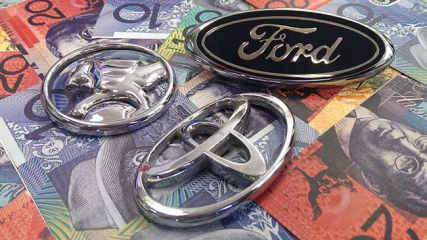
Australian car industry slams the brakes
Read the article
By Joshua Dowling · 06 Jan 2015
Production of locally-made vehicles hit a 61-year low last year as new-car sales experienced their biggest slowdown since the Global Financial Crisis in 2009 and the natural disasters of 2011 -- as Australians treated themselves to a record number of imports, SUVs and luxury cars. Official figures from the Federal Chamber of Automotive Industries show 1,113,224 new cars were reported as sold in 2014 -- down 2 per cent compared with the previous year’s record 1,136,227 deliveries.Eight of the Top 10 brands were down -- only Hyundai and Subaru posted gains -- as most luxury marques posted significant sales increases. “The prices of luxury cars have come down … and they have a wider array of vehicles in different segments, so they’re starting to drift down into areas where they weren’t historically,” said the chief executive of the Federal Chamber of Automotive Industries, Tony Weber. “Australia is now in its 23rd year of economic growth … it makes a a difference to people’s standard of living and that’s reflected in the car fleet,” said Mr Weber. It was the seventh time in the past eight years Australians have bought more than 1 million cars in a calendar year, and the third year in a row it has topped the 1.1 million mark. However record-low interest rates and car affordability at a 38-year high were not enough to drive sales growth for the mainstream brands -- even though the strong Australian dollar wound back prices of popular models by 20 years. The Toyota Corolla -- starting at $19,990 plus on-road costs, the same price it was in 1994 -- was Australia’s top-selling car for the second year in a row ahead of the Mazda3 as sales of our historical favourites, the Holden Commodore and Ford Falcon, hit a new rock bottom.Just 100,468 locally-made Holdens, Fords and Toyotas were sold in 2014; the last time the tally was this low was in 1953 when 99,133 vehicles were made in Australia.Just 100,468 locally-made Holdens, Fords and Toyotas were sold in 2014; the last time the tally was this low was in 1953 when 99,133 vehicles were made in Australia, according to a historical Manufacturing Industries report prepared by the Australian Bureau of Statistics.The same report shows, at its peak, the Australian car manufacturing industry produced 473,045 vehicles in 1976. Between 1968 and 1985 the annual average number of vehicles produced locally exceeded 400,000. However, the Australian car manufacturing industry has been in free fall since the most recent peak of 344,000 vehicles were produced locally just seven years ago, in 2007. In 1960, more than 90 per cent of cars sold in Australia were made locally. In 2005, locally made vehicles accounted for one in four (25 per cent) of all new cars sold. In 2014, less than one in 10 cars (or 9 per cent) was built locally. Falcon sales fell to a shockingly low 6349 deliveries in 2014, less than one-third of the Falcon’s first full year in production on the same Broadmeadows assembly line in 1960 when 26,499 cars were made. The Ford Falcon, last the top-seller in 1995, is now well outside the Top 20, overtaken by the likes of the Volkswagen Golf and a raft of other imports. Ford as a brand had a shocker, posting its worst sales in more than 23 years (as far as digital records go back ) and the 10th year in a row in decline. The Holden Commodore posted its second lowest result on record (30,203 deliveries) but still managed to finish in fifth place even though it has been in a sales slide for the past six months in a row and Holden posted its lowest result in 21 years. Sales of the Holden Cruze, which is made alongside the Commodore at the Holden factory in Elizabeth, are barely half their peak of 33,784 deliveries in 2011. The locally-made Toyota Camry also found market conditions tough, with sales down 11 per cent to 22,044 deliveries -- despite drive-away deals at $26,990, about $8000 off the full retail price -- although it has remained Australia’s best selling medium-size sedan for 21 years. Despite the factory slowdowns Australia’s three remaining car manufacturers say they will keep their factories open until their planned shutdown dates: October 2016 for Ford and late 2017 for Holden and Toyota. Toyota is in the final stages of upgrading its Altona factory to introduce the updated Camry by the middle of this year, two-thirds of which will be exported to the Middle East until the closure. Toyota was the market leader for a record 12th year in a row – ahead of Mazda -- and 18 years in total. But it wasn’t all good news for the Japanese giant; Toyota sales were down for the third year in a row, to 203,498 deliveries, a significant drop from its peak of 238,983 new cars in 2008.Toyota says it will bounce back in 2015 with 10 new models over the next 12 months, including updates to the Camry, Prius and an all-new HiLux. Hyundai eclipsed the 100,000 mark for the first time and Mercedes-Benz came within 1000 sales of bumping off Honda and making it into the Top 10. Indeed, at least three brands -- Jeep, Kia and Mercedes-Benz -- came close to pushing into the Top 10 sellers list. NSW was the only state or territory to post a sales gain in a down market (up 1.5 per cent) and accounted for almost a third of the nation’s new vehicle sales (356,174). Utility vehicles continued to climb the sales ladder, boosted by mining and building sectors and the arrival of more car-like workhorses that serve as family cars on weekends.The Toyota HiLux was Australia’s top-selling pick-up for the 36th year in a row, although the Ford Ranger closed the gap to second place in the ute class ahead of the Mitsubishi Triton.The Toyota HiLux was Australia’s top-selling pick-up for the 36th year in a row, although the Ford Ranger closed the gap to second place in the ute class ahead of the Mitsubishi Triton. All three vehicles made it into the Top 10.Australia’s favourite SUV is a city-friendly faux-wheel-drive called the Mazda CX-5, which signifies another change in buyer tastes: we no longer need heavy duty four-wheel-drives to enjoy the great outdoors. SUV sales hit an all-time high in 2014 and for the first time accounted for more than 30 per cent of the new-car market. “The increase in SUV purchases is a reflection of the versatility these vehicles provide and the increasing range available in the market,” said Mr Weber. Last year Australians bought 100,000 fewer passenger cars than they did in the peak year of 2007 -- and yet over the same period SUV sales have grown by more than 150,000 vehicles. Eight years ago passenger cars accounted for more than 60 per cent of the market; over the past two years they have slipped below 50 per cent. Industry experts believe the shift towards SUVs will continue in 2015 and forecast a similar sales result of 1.1 million vehicles. Mazda and Toyota have just announced price adjustments ahead of the Free Trade Agreement with Japan which comes into force on January 15, 2015. However, rather than discount prices, both car makers have indicated they will add equipment. The removal of the 5 per cent tariff will not equate to a 5 per cent reduction in the RRP; the 5 per cent cut applies to the landed cost of the car and will typically translate to a $500 saving -- or $500 of extra equipment -- on a $20,000 car, according to industry insiders. Cars sourced from South Korea landed have also been exempt from a 5 per cent tariff from December 15, 2014 -- but Holden (which sources most models from South Korea), Hyundai and Kia are yet to announce FTA-related price cuts or equipment changes. Top 10 cars in 2014Toyota Corolla 43,735 -- up 0.5 per centMazda3 43,313 -- up 2.9 per centToyota HiLux 38,126 -- down 4.5 per centHyundai i30 31,505 -- up 3.0 per centHolden Commodore 30,203 -- up 8.8 per centFord Ranger 26,619 -- up 22.3 per centMitsubishi Triton 24,256 -- down 1.0 per centToyota Camry -- 22,044 down 11.3 per centMazda CX-5 21,571 -- up 7.2 per centVolkswagen Golf 19,545 -- up 10.6 per cent Top 10 brands in 2014Toyota 203,501 -- down 5.2 per centHolden 106,092 -- down 5.3 per centMazda 100,704 -- down 2.4 per centHyundai 100,011 -- up 3.1 per centFord 79,703 -- down 8.6 per centMitsubishi 68,637 -- down 4.0 per centNissan 66,025 -- down 14.0 per centVolkswagen 54,801 -- down 0.2 per centSubaru 40,502 -- up 0.8 per centHonda 32,998 -- down 15.9 per cent WinnersAlfa Romeo -- up 5.3 per centAston Martin -- up 8.1 per centAudi -- up 20.1 per centBentley -- up 11.6 per centBMW -- up 10.7 per centCitroen -- up 10.8 per centFerrari -- up 6.6 per centFiat -- up 49.4 per centHyundai -- up 3.1 per centIsuzu -- up 63 per centJaguar -- up 5.6 per centJeep -- up 37.2 per centLand Rover -- up 21.0 per centLexus -- up 1.2 per centMaserati -- up 199 per centMercedes-Benz -- up 15.8 per centMini -- up 1.4 per centPorsche -- up 47.6 per centRenault -- up 42.7 per centRolls-Royce -- up 143 per centSkoda -- up 8.4 per centSubaru -- up 0.8 per cent LosersFord -- down 8.6 per centGreat Wall -- down 56.8 per centHolden -- down 5.3 per centHonda -- down 15.9 per centKia -- down 6.0 per centLamborghini -- down 42.6 per centLotus -- down 14.1 per centMazda -- down 2.4 per centMitsubishi -- down 4.0 per centNissan -- down 14.0 per centPeugeot -- down 0.4 per centSuzuki -- down 21.1 per centToyota -- down 5.2 per centVolkswagen -- down 0.2 per centVolvo -- down 9.3 per cent Australia versus the world: a generation of decline1960: 284,992 of 310,519 = 91.7 per cent locally made cars2005: 248,912 of 988,269 = 25 per cent locally made cars2006: 201,623 of 962,666 = 20.9 per cent locally made cars2007: 200,485 of 1,049,982 = 19 per cent locally made cars2008: 171,432 of 1,012,164 = 16.9 per cent locally made cars2009: 147,680 of 937,328 = 15.7 per cent locally made cars2010: 146,314 of 1,035,574 = 14.1 per cent locally made cars2011: 141,939 of 1,008,437 = 14.0 per cent locally made cars2012: 139,796 of 1,112,032 = 12.5 per cent locally made cars2013: 118,510 of 1,136,227 = 10.4 per cent locally made cars2014: 100,468 of 1,113,224 = 9.0 per cent locally made cars Source: Federal Chamber of Automotive Industries
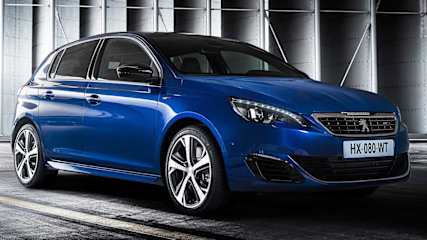
2015 Peugeot 308 and 508 GT models on the way
Read the article
By Matthew Hatton · 06 Jan 2015
Sporty new Peugeot 308 and 508 GT models to hit Australian showrooms in 2015.Peugeot has confirmed it will expand its performance-flavoured offerings in March, with the introduction of new GT variants of the 308 hatch and 508 sedan/wagon to the local market.The 308 GT will have tweaked versions of the powerplants available in the existing 308 Allure. The 150kW/285Nm 1.6-litre turbocharged four-cylinder engine is a 40kW/45Nm improvement, while the 131kW/400Nm 2.0-litre four-cylinder turbodiesel delivers 31kW/30Nm more than its Allure counterpart.Both will be attached to a sports-calibrated six-speed torque-converter automatic transmission with paddle shifters.The sporty hatch will also feature sharpened steering and accelerator response, amplified engine note, telemetry read-outs on the multimedia display, unique cabin trim with red instrument illumination, GT badging, and 18-inch alloys.The 308 GT will also be available in a new GT-signature 'Magnetic blue' paint colour.Driving the 508 GT will be the same 150kW/450Nm 2.2-litre four-cylinder turbodiesel from the existing 508 2.2 HDi. It will be complimented by bi-xenon headlights, GT badging and 19-inch alloys.Peugeot Australia says the two GTs will offer a more rounded driving experience than the existing high-performance 208 GTi."The GT Line will give us the ability to offer a vehicle that offers visual and performance upgrades, while still maintaining comfort in day-to-day driving duties," said Dimitri Andreatidis, National Marking Manager for Peugeot Australia.The introduction of the 308 and 508 GTs paves the way for Peugeot to expand its GT range in the future."We will be working with France to investigate a number of opportunities to grow this segment in the future," said Andreatidis.
.jpg)
Best big boys toys for 2015
Read the article
By Joshua Dowling · 05 Jan 2015
Best of all there is actually a reasonable excuse. Interest rates are still at record lows and prices on imported goods are likely to rise if the Australian dollar continues to dive.Whether you want something on two wheels or four — or even for the water — there is plenty of temptation to spoil yourself rotten. Because you're worth it.Powered by a supercharged V8, the HSV GTS Maloo is the world's fastest ute. Only 150 were supposed to be built but Holden squeezed an extra 100 into the production schedule (the balance to be built at the start of this year).Despite the $90,000 price tag, all are spoken for. But you could get lucky if someone else's deal falls over.With a 0 to 100km/h time of 4.5 seconds it's as fast as a Porsche. If anyone asks why a ute needs so much power, tell them you don't understand the question. Or that it also has the biggest brakes ever fitted to a ute, as well as a stability control system similar to that used by Porsche.If the budget doesn't stretch as far as a HSV GTS Maloo, then the new Ford Falcon XR8 could be a bit of you.It has the supercharged V8 from the previous GT Falcon but, at $52,000, costs about $20,000 less. If the missus can save $100 on a pair of shoes, imagine what a champion you'd be by saving $20,000. At this rate, you're almost making money. Ahem.Forget what you may have read in the car buff magazines, the new Falcon XR8 is so quick it gives the Holden Commodore SS a bloody nose.No wonder it's sold out until March. It'd be a good idea to get in quick because Ford massively undercalled the demand for the last V8 Falcon of all time.If you want a workhorse that's also a show pony then the top of the range Toyota HiLux TRD Black Edition is the go.Toyota has raided the parts bin for the HiLux because the first all-new model in 10 years in due in October.The Black Edition has no extra power, payload or towing capacity but it gets pimped-out looks and a leather interior. Available from about $55,000 in, er, black or white, the Black Edition costs $550 extra if you want a black one.With a design inspired by Formula One motor racing cars and a supercharged engine that uses aerospace technology, the Kawasaki Ninja H2 is expected to claim the title of the world's fastest motorcycle when it goes on sale in the first half of this year priced about $30,000.It is said to blast from 0 to 100km/h in less than 2.5 seconds — as quick as an F1 racing machine, if riders can hang on to it.The supercharged engine has almost as much power as a Volkswagen Golf GTI hot hatch, but the Kawasaki Ninja H2 weighs barely one-fifth as much as a car.The supercharger technology is so sophisticated it has been banned from international motorcycle racing since 1946, but has returned to a modern, road-going motorcycle in the search for more power from smaller engines. Cool factor: infinity.The price of a jet ski (or "personal water craft", as they're officially known, because "jet ski" is a Kawasaki name) has been cut by more than half with the arrival of the Sea-Doo Spark which is about $9000 tow-away, no more to pay — including a trailer.The Sea-Doo Spark has a little less power than the $20,000 to $25,000 beasts but is barely any slower and still capable of giving you a fright — or a workout.The best way to get this over the line with the other half is to explain that riding one is like Pilates and Yoga for men.Jumping waves and skimming over choppy waters will work your pelvic floor and other core muscles you didn't know you had, including those in your glutes and quads. I know because I tried it and have only just started to walk normally recently.This truly is Yoga at 100km/h on the water, with a nice sea breeze. Best of all, you have to put the phone away. And it's light enough to tow it with a hatchback. If you dare.
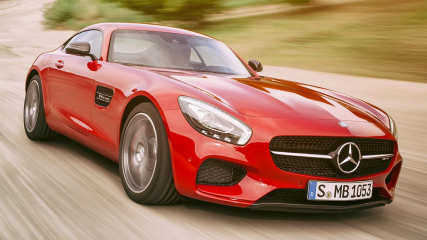
The 10 most important new cars of 2015
Read the article
By Joshua Dowling · 02 Jan 2015
But the start of 2015 is gearing up for more hot deals than usual because new car sales stalled last year for the first time since the Global Financial Crisis.It means dealers are overstocked and they're even more eager to make way for fresh metal.Adding to the pressure - and putting buyers in the driver's seat - is the uncertainty around Australia's currency, which has taken a hit in recent months. Buying a new car now could mean a double-saving; get the discount on end-of-year bargains and beat possible price rises.Record low interest rates and favourable exchange rates saw new car prices fall to 20-year lows in 2014 as affordability hit a 38-year high in 2014.But once the cars imported at last year's exchange rates are cleared, the chances are new models won't be discounted as heavily, or prices may even rise.Most cars sold in Australia are sourced from Japan (30 per cent), Thailand (20 per cent) and South Korea (12 per cent) - rather than the US (5 per cent) - but most car companies buy in US dollars as it has historically been more stable.The prices of Japanese branded cars are likely to remain steady because the Japanese Government artificially devalues the yen to boost exports. But the value of the Australian dollar against the currencies of Thailand, South Korea and the US is less stable.It means price rises are likely on almost every ute sold in Australia because most are made in Thailand, including the top-selling Toyota HiLux, Ford Ranger, Nissan Navara, Mitsubishi Triton and Holden Colorado, among others.South Korean brands Hyundai and Kia, two of the industry's biggest discounters, may also lose some of their bargaining power if the Australian dollar continues to head south.But one brand you may not be expecting to go backwards due to a shift in currency is Holden, which sources eight of its 12 models from South Korea and two from Thailand.With that in mind we have assembled the 10 cars we reckon are worth waiting for. Remember to always judge a car by its build date (the day it went down the production line and how its age will be measured when it comes time to sell), rather than the compliance plate (in effect, when the car cleared Australian customs).Be warned: there are still some 2013-built cars out there (Nissan, we're looking at you), so be sure to haggle hard and make sure the factory warranty starts the day you take delivery.Sometimes it's worth waiting for an all-new model, or at least knowing if you have more bargaining power if the dealer is trying to clear not only last year's model but one that is about to be superseded.The successor to Australia's cheapest car from a mainstream brand is just around the corner with a new look and a new name. The Suzuki Celerio is bigger than the Alto and the 1.0-litre three-cylinder has been tuned to run on regular unleaded (rather than premium like its predecessor), making it one of the cheapest cars to own and operate. Expect a super-sharp $13,990 drive-away starting price when it goes on sale in February.Australia is going to be crawling with pint-sized SUVs next year but the Mazda CX-3 is likely to take most of the spotlight. Available with a 1.5-litre turbo diesel or a 2.0-litre petrol engine it is expected to start between $20,000 and $25,000 when it goes on sale in March. It will join the Honda HR-V (February), Renault Captur (February), the next generation Suzuki Vitara (June), the unusually named Citroen Cactus (June), and the cutesy Fiat 500X (November).The city-sized soft-roader market is so huge globally even off-road brand Jeep has joined the fray. The Jeep Renegade may look like a scaled-down Tonka Truck but it is based on the same underbody as the Fiat Punto, Alfa Romeo Mito and the Fiat 500X. Powered by a 1.4-litre turbo petrol or 2.0-litre turbo diesel matched to a segment-leading nine-speed automatic transmission, the Renegade is due in showrooms in October priced between $20,000 and $30,000.The first new Nissan Navara in 10 years arrives in showrooms in April with two new 2.3-litre turbo diesel engines (one with a single turbo, the other with twin turbos). The outputs are almost the same as the previous 2.5-litre turbo diesel, despite being smaller in capacity (a 118kW/403Nm version and a 140kW/450Nm version). Payload and towing capacity are yet to be confirmed but bank on a one-tonne cargo rating and a 3500kg towing limit (bringing the Navara into line with class leaders). The 550Nm Navara with the Renault 3.0-litre turbo diesel V6 has been dropped. It will be a big year for utes, with a rebodied Mitsubishi Triton due in May, significant updates due for the Ford Ranger and Mazda BT50 in July, an all-new Toyota HiLux in October.Take a close look at the new Ford Mondeo due on sale in April. This is a pointer to the vehicle that will eventually replace the Falcon. Available in sedan and wagon body styles, likely with a choice of 2.0-litre turbo petrol or 2.0-litre turbo diesel engines, prices are expected to range from $30,000 to $50,000. It will also be loaded with technology including LED headlights, automatic emergency braking with pedestrian detection, and industry-leading rear seatbelt airbags. A hybrid version will join the Mondeo line-up later in the year.Jaguar is making a second attempt at the lucrative mid-size luxury sedan market dominated by the Audi A4, BMW 3 Series and Mercedes-Benz C Class. After learning from the ill-conceived 2002 X-Type based on the Ford Mondeo, Jaguar has started with a cleansheet design and aluminium construction. It will be available with a 2.0-litre petrol engine, and a 2.0-litre turbo diesel said to sip 4.0L/100km, less than the Audi A4 (4.8L/100km) and BMW 320d (4.5L/100km) aided by an eight-speed auto. At the other end of the scale: a supercharged 3.0-litre V6 with a 0 to 100km/h time of 5.1 seconds. Due on sale in September, it's likely to start about $60,000.The first new Volvo XC90 in 12 years is also the first all-new model developed since Volvo was bought by China's Geely motor company in 2010. Promising to the world's safest SUV it will automatically slam on the brakes if you're about to turn in front of an oncoming car, and can also spot cyclists and pedestrians at night. It even has eyes in the back of its head: a radar system can detect if you're about to be hit from behind, and will prepare the seatbelts and headrests for the sudden impact. It will be available with a choice of four-cylinder petrol or diesel power, and a plug-in hybrid that can travel up to 40km on battery power alone (before switching to petrol power), the first seven-seater of its type in the world. Due in showrooms in July priced about $90,000.Mazda has gone back to basics – in every sense of the word – and wound back the clock with the new MX-5 sports-car. The first all-new MX-5 since the original was launched 25 years ago goes back to its lightweight, low cost roots (each wheel only has four locating nuts instead of five, for example) and promises a soft-top roof and a sub-1000kg mass for the first time since last century. Since 2006 the Mazda MX-5 has had a folding metal roof to help it weather storms and thwart thieves, but this has added weight, complexity and cost. The new model is expected to be available with a choice of two engines – a 1.5- and a 2.0-litre – when it goes on sale in September priced below $40,000.The Ford Mustang returns to Australia in October for the first time since 2003, but it will be the first time in the nameplate's 50-year history that it will be made in right-hand-drive on a Ford production line (Flat Rock, Michigan). All models before this one were converted to right-hand-drive locally. It will be available with a choice of 2.3-litre four-cylinder turbo or 5.0-litre V8 power in coupe and convertible body styles. Prices will range from $50,000 to $70,000.Mercedes-Benz's answer to the Porsche 911 arrives in July priced about $270,000. Powered by a twin-turbo 4.0-litre V8 that will also power the upcoming AMG C63 sedan, it can complete the 0 to 100km/h dash in just 3.8 seconds. Fun fact for the tech heads: it has a better weight distribution (47/53 front to rear) than either the Porsche 911 (39/61) or Cayman (46/54). Game on.
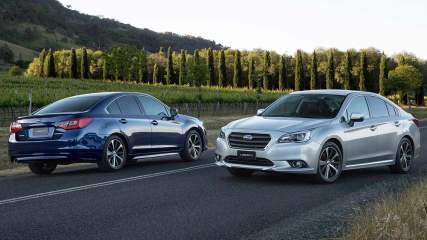
2015 Subaru Liberty | new car sales price
Read the article
By Matthew Hatton · 17 Dec 2014
New Subaru Liberty brings significant price cuts, improved efficiency and safety.Subaru's new Liberty has touched down in Australia this week, bringing significant improvements in value, plus fuel efficency and safety gains for the sixth-generation of the mid-size model.Now available as a sedan only for the first time in the Liberty's 25-year history in Australia, Subaru has also trimmed the number of model variants down from five to three.The price-leading Liberty 2.5i is now $3,000 cheaper, priced from $29,990. The mid-spec 2.5i Premium is now $35,490, a reduction of $4,000. The top 3.6R has seen its cost reduce by a full $14,000 to $41,990.These reduced prices does not mean Subaru has skimped on features however, with Subaru adding their EyeSight driver assistance technology and efficiency-boosting engine start/stop technology.The new body design has also increased the Liberty's boot capacity by 17 litres to 493 litres.Like it's Outback SUV stablemate, the new Liberty achieved the highest ANCAP crash test scores by a Subaru to date on its way to a maximum five-star safety rating.The 2015 Liberty gains an updated multimedia system, with a 6.2-inch touchscreen controlling the 2.5i and 2.5i Premium's six-speaker audio system, along with iPod/USB/aux/Bluetooth connectivity.The basic 2.5i comes with dual-zone climate control, leather gear shifter and multifunction steering wheel with paddle shifters, auto headlights and wipers, plus 18-inch alloysThe 2.5i Premium adds satnav and Pandora audio streaming, leather trim with heated front seats, electric sunroof, push-button start and LED headlights.The 3.6R gets all the features of the 2.5i Premium, plus a 12-speaker Harman Kardon audio system.The 2.5i and 2.5i Premium come with an upgraded 129kW/235Nm 2.5-litre four-cylinder boxer petrol engine and CVT automatic transmission from the previous model. The upgrades have boosted the power by 2kW and reduced the combined fuel rating to 7.3L/100km, down from 7.9L/100km.The new 3.6R moves from the five-speed automatic transmission of its previous incarnation in favour of the same CVT auto of the 2.5i.Power outputs for the top 3.6R are unchanged at 191kW/350Nm for the 3.6-litre six-cylinder boxer petrol engine, but the CVT auto and stop/start has helped improve combined fuel efficiency to 9.9L/100km, down from 10.3L/100km.
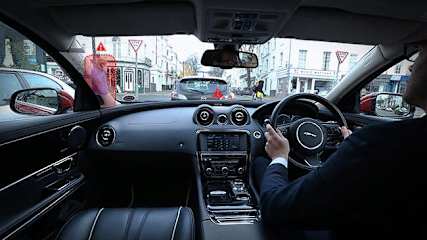
Jaguar Land Rover reveals transparent pillar technology | video
Read the article
By Aiden Taylor · 17 Dec 2014
Invisible pillar tech set to boost safety by banishing blind spots.Augmented reality systems could soon remove the blind spots caused by intrusive roof pillars in future Jaguar and Land Rover vehicles.Similar to the off-road-orientated transparent bonnet technology showcased by Land Rover at this year’s New York motor show, the augmented reality tech has now found a more mainstream application in see-through pillars.The invisible pillar tech works by taking a live video feed from various angles around the car and displaying the image in real time on a screen which is built into each of the pillars.The system virtually gives the driver a 360 degree view around the car – providing they can peer around the headrests and irritating rear seat passengers. Maybe they can make them invisible too? These screens are also connected to an advanced head-up display device which can highlight obstacles, pedestrians or other motorists via an on-screen alert.The transparent pillars may also be activated via the car’s indicator signals, so when the driver applies their right turn signal to merge, overtake or enter a side street, the pillars on the right side of the car become transparent.Jaguar also says the 360-degree virtual windscreen technology has the potential to be linked with the Cloud to connect the car with road infrastructure and local businesses.For example, the windscreen could display the fuel prices of the nearest petrol station or the number of parking spaces available at a nearby car park. It could probably show your Twitter and Facebook notifications too, but that may be somewhat unsafe.Jaguar Land Rover is also using its virtual windscreen electronics to make satellite navigation systems more user-friendly by projecting a ‘ghost car’ onto the windscreen for the driver to follow to their destination.The aim is to make driving safer by reducing the potential for accidents, said Dr Wolfgang Epple, R&D boss at Jaguar Land Rover.“The Jaguar Land Rover research team is developing this technology to improve visibility and to give the driver with the right information at the right time,” he said. “If we can keep the driver’s eyes on the road ahead and present information in a non-distracting way, we can help drivers make better decisions in the most demanding and congested driving environments.”

2015 BMW 6 Series and M6 models revealed
Read the article
By Aiden Taylor · 12 Dec 2014
Subtle tweaks for 2015 BMW 6 Series and M6 models.BMW has given its 6 Series Coupe, Convertible and Gran Coupe range a facelift for the 2015 model year.The changes are subtle and mainly focused on the aesthetics and standard equipment for the luxury lineup.Headlining the changes is a new front bumper fitted with a revised pair of kidney grilles, accented by standard full LED headlights which are available for the first time on the 6.Adaptive LED headlights with selective beam, which can direct the car’s high-beams away from oncoming traffic, are also available as an option. A tweaked rear bumper has also been fitted and is said to give the car a wider and more aggressive stance, while new exhaust tips add to the sporty flavour of the updated 6 Series range.A new range of metallic paint options is also available with Jatoba, Cashmere Silver, Glacier Silver, Mediterranean Blue and Melbourne Red added to the 6 Series color pallet.The changes are minimal indoors with higher quality gloss black center console materials fitted and leather upholstery with contrasting stitching added to the options list.All petrol 6 Series models will also gain a sports exhaust system with a switchable noise flap for ultimate refinement when cruising, or a louder note when the mood suits.Power and performance figures are however unchanged from the existing range. The 640i uses a 235kW/450Nm 3.0-litre turbocharged straight six, the 650i employs a 330kW/650Nm twin-turbo V8, while the diesel 640d produces 230kW/630Nm from its 3.0-litre six.All Australian models bar the M6 use an 8-speed automatic gearbox driving the rear wheels.The M6 features a 7-speed dual-clutch unit and keeps its 412kW/680Nm 4.4-litre twin-turbo V8. The performance model can hit 100km/h in 4.2 seconds in Coupe and four-door Gran Coupe form, while the drop-top takes an extra tenth at 4.3 seconds.Cars equipped with the optional Competition Pack get a handful of extra kilowatts at 423kW, along with stiffer suspension, new alloys and sports exhaust.Changes to the M6 range are limited to a new front fascia along with the full LED headlights and gloss black centre console materials added to the rest of the 6 Series range.The new 6 Series and M6 models are expected to arrive in Australia in the first half of 2015.
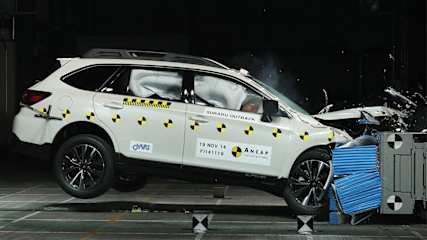
ANCAP awards five stars to 2015 Subaru Liberty and Outback
Read the article
By Matthew Hatton · 11 Dec 2014
2015 Subaru Liberty and Outback receive five-star safety rating from ANCAP.Subaru's new Liberty sedan and Outback SUV have both achieved a maximum five-star safety rating from ANCAP, passing the crash tests with scores of 35.99 out of a possible 37.ANCAP said both vehicles' safety features, combined with their crash test scores met the requirements to be awarded the maximum safety rating, despite the absence of some safety features from local versions of both cars.Daytime running lights and tyre pressure monitoring are available on overseas models, but not locally according to ANCAP. They also noted Subaru's 'EyeSight' collision avoidance system is optional on the Outback while coming as standard on the Liberty.ANCAP Chairman, Lauchlan McIntosh said improved safety features should be available as standard."It is good to see safety assist technologies becoming increasingly available, but ANCAP encourages Subaru, and all other manufacturers, to include these technologies as standard in all models and all markets," he said.The crash test reports also included data from Euro NCAP testing, which demonstrated both the Outback and the Liberty provided acceptable levels of pedestrian protection in the event of a front-on collision.
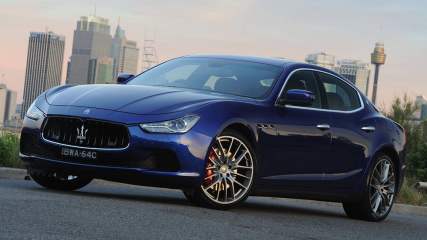
Luxury brands win November car sales race
Read the article
By Philip King · 11 Dec 2014
Last year the vehicle market notched up a record with 1,136,227 sales, busting the previous zenith by about 24,000 and confirming that in Australia, one million-plus is the norm.Figures for November, released last week, show sales have already passed the million mark, and when the final tally emerges in early January the industry will congratulate itself on another bumper year.In reality, it has spent most of 2014 in reverse and it would take a freak December to even approach last year's total.If the trend holds, then the overall decline will be about 2 per cent - equivalent to 500 fewer buyers a week. But it's a mixed picture for the 50 or so brands, with the gap between winners and losers larger than ever.With one or two exceptions, the winners by a substantial margin are luxury brands. Their share of the market now approaches 9 per cent, up from 7.7 per cent last year, and it's reflected in some impressive numbers.The German luxury trio dominates but Australia bucks the trend by favouring Mercedes-Benz ahead of BMW and Audi.With its small car range - the A, B, CLA and GLA - flying out of showrooms, the three-pointed star is stretching its lead over BMW and rubs it in by selling more of its expensive performance variants as well.Its bestseller, the C-Class, has been available for only a few months but will finish the year as the third most popular mid-size car at any price - behind only the Toyota Camry and Mazda6.Audi's ambition is to overtake its German peers and become No 1 here, replicating its position in Europe and China. After slowing in 2012, its growth spurt has resumed and it's catching BMW on the strength of its award-winning A3 small car.Some of the second-tier luxury brands are powering ahead even faster. Thanks to its new-generation Range Rover and Range Rover Sport, demand for the British SUV specialist is up 22 per cent. It will finish as the fourth most popular luxury marque.Ironically, SUV demand is also powering Porsche. It cannot get enough of its second SUV, the Macan, and waiting times are stretching the patience of buyers. Without the Macan, Porsche was on track for a record. With it, sales are up almost 50 per cent. When Maserati adds an SUV, the Levante, in 2016 it can expect to get a comparable boost.Super-large, super-expensive SUVs are what the elite badges lack but they are all working on one. Even so, Maserati's push for volume is yielding results. The new-generation large sedans Ghibli and Quattroporte have almost tripled sales this year.Even among the luxury brands there are losers. Volvo lacks the deep pockets of the Germans and is struggling to keep its product pipeline full. Its dealers will doubtless breathe easier when the overdue replacement for its XC90 SUV arrives in the second quarter next year, with sales down 7 per cent in 2014.Lexus is another that has waited too long for fresh product and its NX mid-size SUV arrives too late to prevent it treading water.Among mainstream brands, losers are much easier to find than winners. Over-optimism and the pressure to grow meant many ended 2013 carrying too much stock, with Nissan the standout - but far from sole - example.The traditional solution to this problem, and one by no means limited to mainstream brands, is for the distributor and/or dealers to register cars themselves.It's a way of meeting sales targets but it simply saves up trouble, not the least of which is an excess of ageing 'demonstrator' models that sooner or later have to actually be sold. When they are, the sales have already been counted.Combine that with an assault on their traditional territory by the luxury brands and everyone from Toyota to Honda, Holden to Ford, has seen their numbers go south.But the biggest losers in 2014? Cheap Chinese brands, with Chery sales down 35 per cent and Great Wall almost 60 per cent.




